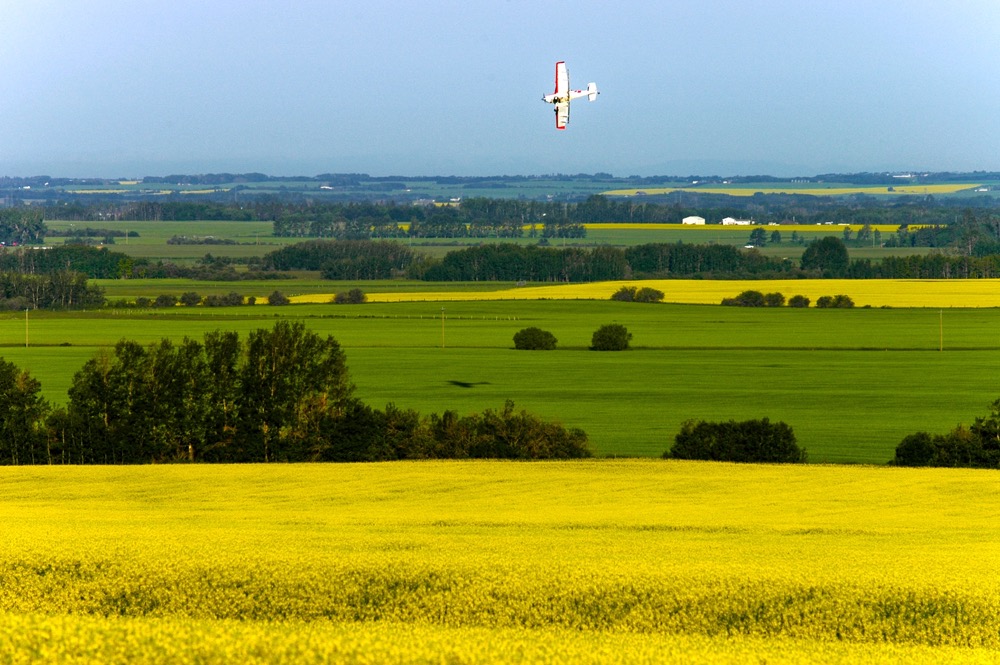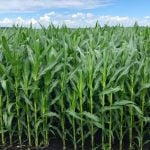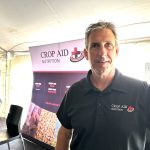It has been a trying year for many Prairie farmers. Late-spring frosts, drought, and then a wet fall created headaches for many growers. Unfortunately, an even bigger headache could overshadow these weather issues, resulting in economic losses for every Canadian producer.
There is a very real possibility we will lose sales and maybe even important markets this winter due to Canadian shipments of grain exceeding the maximum residue limits (MRL) of importing countries.
The registration of Clever (quinclorac) and Manipulator (chlormequat) for use in Canada means MLRs are once again a major issue for both farmers and grain companies. Even though it is legal for farmers in Canada to apply these products, our primary export markets have severe restrictions on any residues in grains and oilseeds and even in processed products derived from those crops.
Read Also

Could crop sharing be a viable option for your farm?
Crop sharing could be a good option for young and beginning farmers.
As a result, grain companies are reluctant to handle any crops treated with these products due to the risk of a shipment being refused because of residues.
“This is a very difficult situation,” says Wade Sobkowich, executive director, Western Grain Elevator Association. “We understand this problem is not caused by farmers. Farmers are caught between a rock and a hard place.”
Sobkowich explains that the United States has no MRL for chlormequat. As a result, crops treated with chlormequat simply cannot be exported to the U.S. Likewise, a number of the countries which import canola and canola products from Canada, including Japan, have not established MRLs for quinclorac, closing the door on crops where quinclorac was applied.
As a result, some grain-handling and processing facilities are outright refusing to accept any grains and oilseeds which had chlormequat or quinclorac applied. The Louis Dreyfus Commodities website states: “The U.S. export markets have minimal tolerance for quinclorac, the active ingredient in “Clever Dry Flow Herbicide.” Therefore Louis Dreyfus at Yorkton will not accept any canola deliveries that have been treated with this product for the 2015-16 crop year.”
In a June 26 online news release, Cargill stated: “Cargill’s purchase contracts include a warranty by growers that in growing the commodity sold to Cargill, the grower has only used pesticides that are approved for use on crops in major Canadian export markets (including U.S., Mexico, Japan, EU and China). As a result, any deliveries of canola treated with quinclorac will be rejected by Cargill.”
Sobkowich points out the cost of segregating canola is very high and it would not pay for companies to accept canola if their primary sales program is to countries which do not accept quinclorac residues. However, he says there are other facilities which export to other markets which will take delivery of quinclorac-treated canola, or cereals to which chlormequat has been applied.
“Farmers are advised to work with the grain companies,” Sobkowich says. “If one facility will not accept the crop, it is recommended you go to other locations. It should not be too difficult to find somewhere to deliver, depending on the area.”
The trade response is evolving, however. When asked if his company was accepting quinclorac-treated canola, Aaron Anderson, assistant vice-president for western grains at Richardson Pioneer, told Country Guide, “All RP facilities have the ability to receive and handle Clever-treated canola. We will be assessing the needs of our grower customers and working with them to collect and market quinclorac-treated canola, where we can limit risk and maintain Canada’s reputation as a supplier of quality, food-safe grains and oilseeds to the world.”
Remember Triffid flax?
This is not a new phenomenon. Globally there are cases every year when shipments of grains and foodstuffs are rejected because the phytosanitary regulations of the importing country are more stringent than the regulations in the country in which the crops are grown. Ignoring the rules of importing countries not only puts current sales at risk, but future sales as well, and it can result in significant economic losses for the growers in the country of origin.
Triffid flax is an example of what can happen when an importer’s regulations are not adhered to. Just on the suspicion that flax exports from Canada contained a very low level of an unlicensed GMO variety of flax, Canadian flax prices dropped by a third. When those rumours were confirmed with the findings of Triffid in a flax shipment to Japan, 35 countries closed their borders to our flax exports, including 28 in the EU which accounts for 60 per cent of our flax export market.
A University of Saskatchewan study estimated that the cost to the Canadian flax industry in the first year alone was $29 million due to demurrage, testing, and segregation costs. Furthermore, a Canadian industry study also found Triffid flax added that much or more in costs to the EU flax industry by 2011. As well, due to contamination of seed stocks, Canadian growers lost the rights to grow two flax varieties: CDC Normandy and CDC Mons.
In 2003, Japan rejected a French shipment of canola when it found residue of an unapproved insecticide. Not only did the French shipper lose a $6-million sale, it also cost the company an additional $2 million in demurrage, shipping and handling. Most importantly, Japan lost confidence in the ability of French farmers to supply canola that meets their standards, which cost French farmers millions more in lost sales.
Australian shippers lost $11 million when Japan found a shipment of canola exceeded Japan’s MRL for fenitrothion. It also resulted in increased testing of all shipments of canola from Australia.
In 2013 Japan refused two containers of buckwheat from Manitoba because they exceeded Japan’s MRL for thiamethoxam.
Earlier this year, three U.S. hay exporters were blacklisted from supplying hay to China after Roundup Ready alfalfa was found in hay shipments. Hundreds of containers of hay were turned away.
The Japanese market for Canadian canola is worth over $1 billion. Farmers simply cannot afford to put this market at risk by knowingly or inadvertently delivering quinclorac-treated canola without informing the facility quinclorac had been applied.
Not declaring the use of either quinclorac or chlormequat before delivery can not only put Canada’s grain and oilseeds industry at risk, it could bankrupt a farm business.
The Cargill news release reminded growers that the Declaration of Eligibility for Delivery Form must be signed by all producers prior to delivery. Furthermore, the news release states, “The declaration further includes an indemnity for all costs incurred in relation to any delivery that is made contrary to the representations made in such document.”
Richardson Pioneer’s Anderson says that if a grower delivers quinclorac-treated canola without declaring it as such, “It will most likely come with some serious financial/trade implications.”
Anderson says the cost of a rejected cargo of canola could be in the range of $20 million, not including future losses cost by lost sales.
To say the costs would be significant is most likely “an understatement,” Anderson adds. “Our Corporate Quality Assurance and Food Safety systems allow us to conduct full traceability of all grains and oilseeds that are delivered to each individual sale… we are able to trace grain from source of origination to final delivery.”
Yet in spite of the risk both to the farm business and our grains industry, there are still farmers complaining about having to declare their use of these products and who continue to apply pesticides to crops off label. There are likely even a few who will try to deliver crops grown with quinclorac and/or chlormequat without telling the buyer. They honestly see themselves as victims.
The blame game
Most farm anger over the MRL issue seems directed at the grain companies but these companies might be the wrong people to blame. They do seem to be trying to protect our markets by ensuring we meet all the regulations of importing nations.
Instead, Sobkowich says, “We (Canadians) need to review the entire process of registration.”
Sobkowich’s statement made me realize that while our regulatory system ensures products are safe for consumers and the environment, that approval only applies within Canada. Furthermore, it doesn’t consider the countries we market to. Why is our regulatory system approving pesticides when our major markets will not accept treated crops?
Pesticide companies also need to shoulder some of the blame. Do they really consider the end-user?
However, farmers themselves may be the biggest problem. Too many ignore the first axiom of business: the customer is always right!
Farmers need to focus so much on bigger, faster, cheaper, and easier, they may take a “let them eat cake” attitude to their customers. Are farmers so divorced from the end-user that they simply have no idea of what is needed, wanted or opposed?
That is a very dangerous attitude in a world with a current surplus of grain stocks. True businesses would focus on producing products that the customers believe in and want, not just on what the businesses decide the customer should buy.
Essential farm steps
- Segregate on farm all production which has had an application of quinclorac or chlormequat.
- Declare all production from fields treated with quinclorac and chlormequat.
- Work with the grain companies to deliver when and where treated crop can be handled.
- Ensure you follow the labels of all pesticides to ensure residues are minimized (correct rate, timing, and pre-harvest interval).
- Do not apply any pesticide for uses not on the label.
- Do not grow unlicensed varieties of any crops.
















